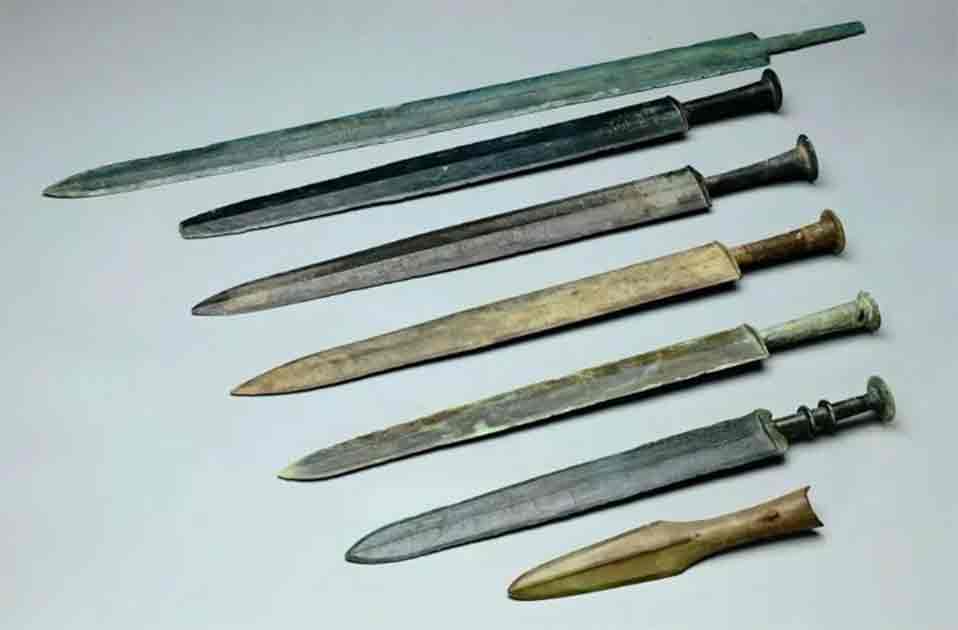Warring States Period Cemetery With Pristine Weapons Discovered in China
Archaeologists in China have made the exciting discovery of a sprawling cemetery from the Warring States period, over 2,200 years ago. They have excavated many ancient tombs and more than 500 artifacts, including a fine array of weapons. This remarkable find sheds new light on ancient Chinese life, and notably the enigmatic Chu culture.
The discovery has been made near Dengcheng village in Xiangyang, Hubei Province, where teams from the Hubei Provincial Institute of Cultural Relics and Archaeology, together with the Xiangyang Municipal Institute, have unearthed the Warring States period cemetery dating back to 475–221 BC, a time of intense historical significance and cultural development in ancient China.
- Sun Tzu: Famous Chinese Strategist and Philosopher
- Metallurgy Prowess Revealed by World’s Oldest Swords Discovered in Turkey
Remarkable Tombs and Rich Heritage Unearthed
Archaeology News reports the excavation revealed an impressive total of 176 tombs, with the vast majority harking back to the Warring States era. Just two were identified as being from the later Han Dynasty.
The site featured nine medium-sized tombs, designated M1 through M9, with three—M1, M2, and M3—standing out due to their larger size, sophisticated structure, and rich burial contents, including sloping passages that lead into the tomb chambers.

Aerial view of the cemetery discovered in Hubei Province, China. (Chinese Academy of Social Sciences)
The richness of the site extends beyond its burial architecture. Within tombs M3 and M4, the archaeologists discovered remnants of decayed coffins surrounded by an extensive array of funerary objects. These include bronze tripods, pots, boats, swords, spoons, and horse bits, painting a vivid picture of the life and afterlife beliefs of the era. Nearby, several burials of horses along with their chariots were also found, suggesting the high status of the individuals buried here.
- Superweapon of the Ancient World: A History of Chariots
- Discovery of Three Chariots in India Suggests Warrior Class of Ancient Civilization

Burials of horses and chariots were also found at the site. (Chinese Academy of Social Sciences)
A Treasure Trove of Cultural Relics
The site yielded a staggering collection of over 500 cultural artifacts, ranging from pottery sets and ritualistic items to everyday objects like plates, bowls, and combs. This vast collection provides unprecedented insights into the funerary customs and daily life in the Xiangyang region during the latter part of the Warring States period. The artifacts also contribute significantly to the understanding of Chu culture, a major cultural and political entity during the Eastern Zhou dynasty.
Historical Context and Future Insights
The Warring States period was a significant era in Chinese history, spanned from the 5th to the 3rd centuries BC, marking a time of intense warfare and military innovation among seven major states. This era was characterized by constant conflict, leading to significant casualties but also advancements in military technology and strategy.
The period is traditionally considered to have started in 475 BC, with varying opinions on its exact onset. It was a time when the Eastern Zhou's rule was nominal, with real power lying in the hands of regional states like Qin, Qi, Chu, Han, Wei, Zhao, and Yan. These states engaged in relentless warfare for dominance, profoundly shaping Chinese history.
The end of this era came with Ying Zheng of Qin, who ascended the throne at the age of 13 and by 221 BC had unified China, founding the Qin Dynasty and becoming its first emperor, Qin Shi Huang. This unification marked the end of the Warring States Period and the beginning of imperial China.
Military advancements were notable during this time, including the introduction of iron weapons and the crossbow, which revolutionized warfare. Additionally, this period saw the development of significant military treatises such as Sun Tzu’s "Art of War".
Overall, the Warring States Period was a transformative time in Chinese history, characterized by bloodshed but also by considerable advancements in military tactics and technology.
The strategic location of Xiangyang Baizhuang, along the north bank of the Han River, bears historical significance that traces back to the Western Zhou Dynasty, integrating into the narrative of the state of Deng and its conquest by the state of Chu in 678 BC. This discovery underscores the area's importance as a subsidiary burial ground, likely associated with Deng County during the Warring States period.
The excavation, meticulously carried out alongside a construction project, opens new doors for historians and archaeologists alike, offering fresh materials for the study of ancient Chinese customs and culture. As the excavation continues, it is expected to unveil further secrets from China's storied past, contributing to our understanding of this fascinating epoch.
The discovery at Xiangyang adds a valuable chapter to the rich tapestry of China's historical narrative, promising to enlighten future studies with its newfound data and artifacts.
Top image: Bronze swords and spearheads, recovered from the Warring States Period Cemetery. Source: Chinese Academy of Social Sciences
By Gary Manners

















